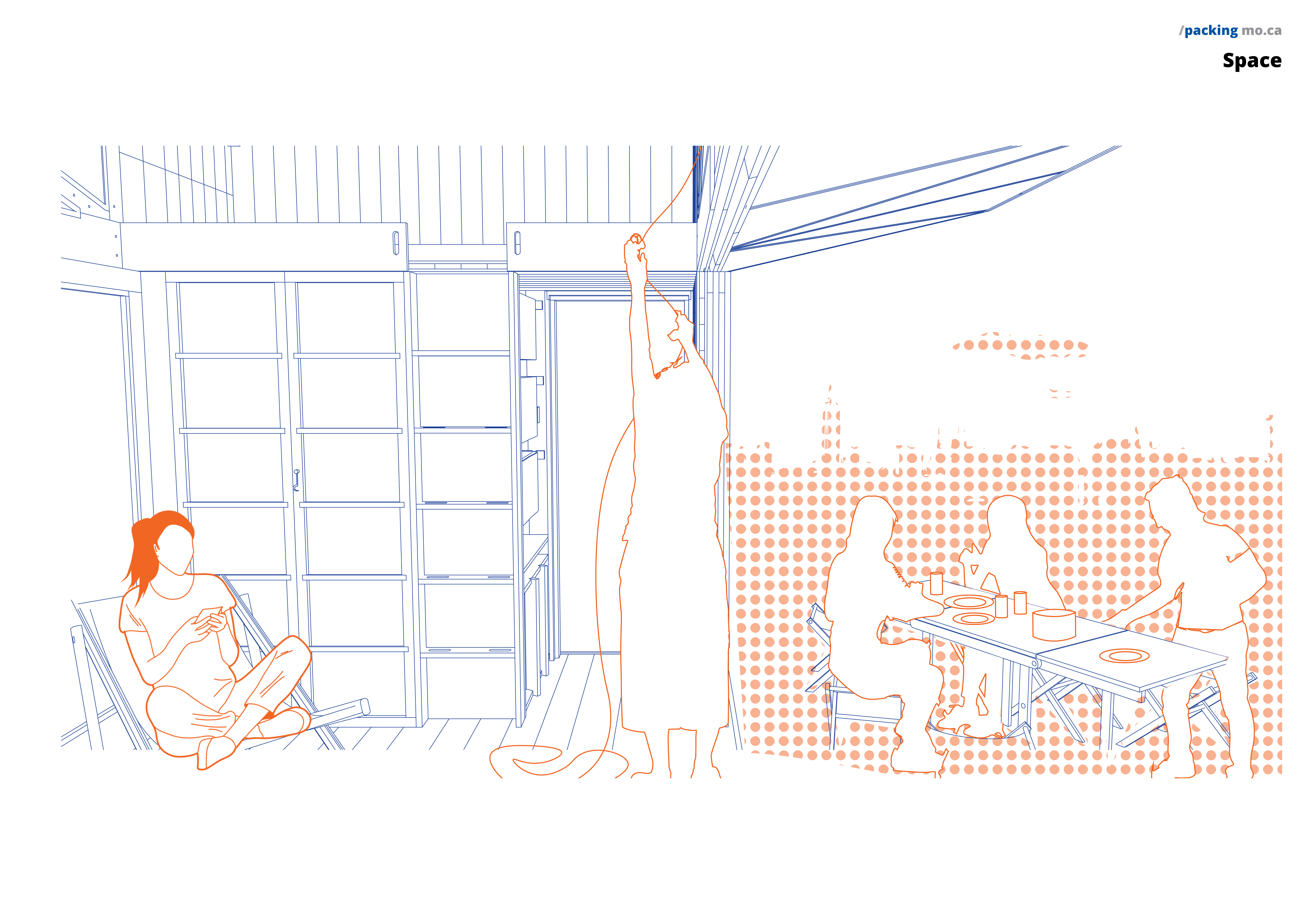The brief for the MAEBB batch of 2022-23 was to design and construct an advanced ecological prototype mobile home. The home was to be designed for two individuals and basic domestic amenities of a tiny home.
The mobility element of the brief started an interesting journey that brought forth discussions on nomadism and collective sustenance. How could a home take advantage of its mobility? Could it contribute to its immediate surroundings? Could the building allow collaboration and knowledge sharing? With such questions in mind, a regenerative design was proposed that would connect, collect and share resources within networks. The brief was extended from its initial definition of a home and the design was developed to become a facilitator- a Mobile Catalyst.
Why do we want to move?
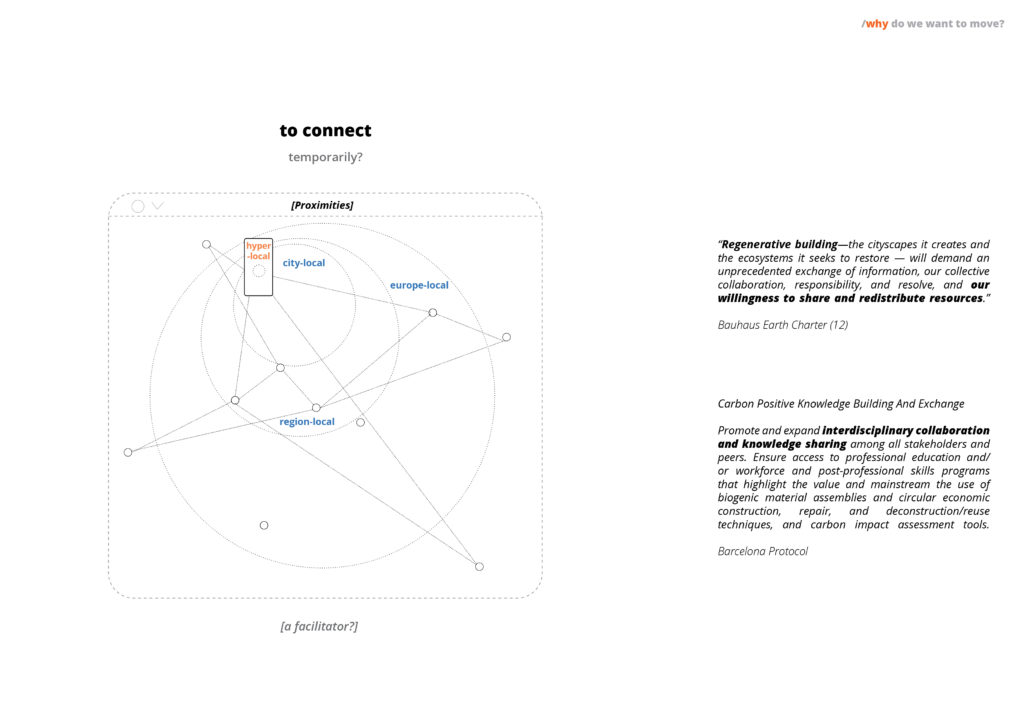
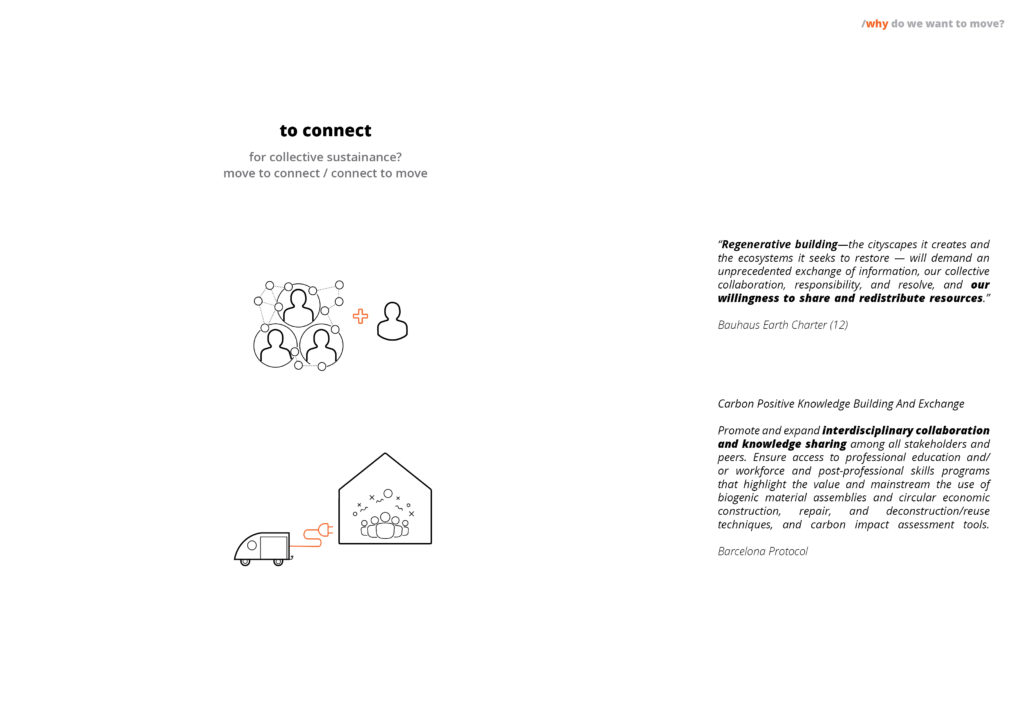

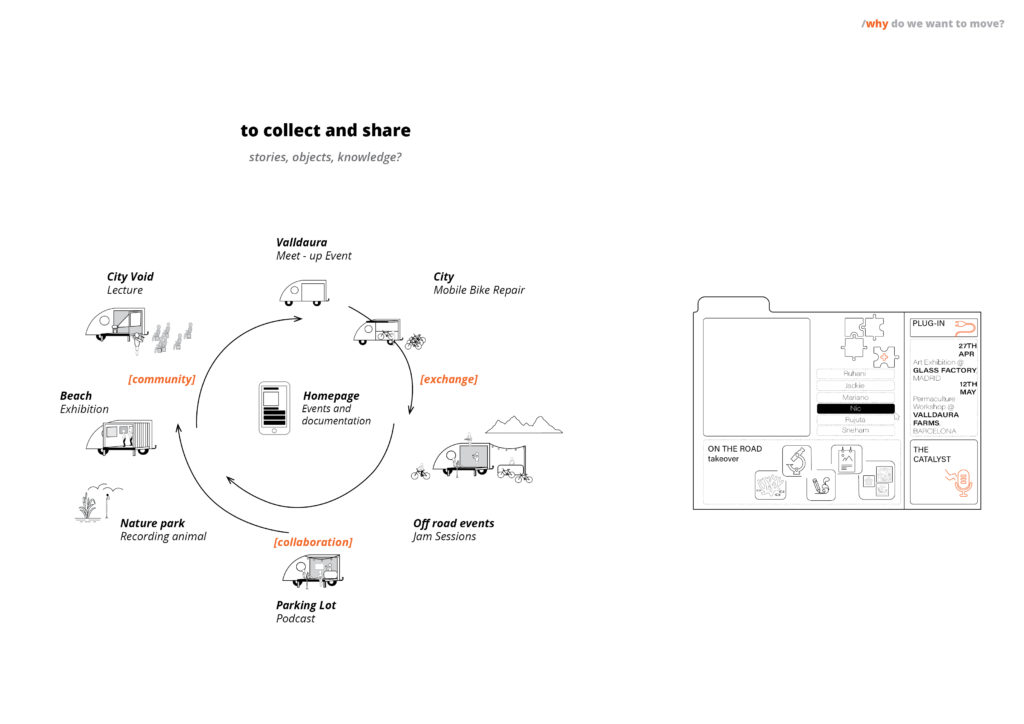
Where do we want to move?
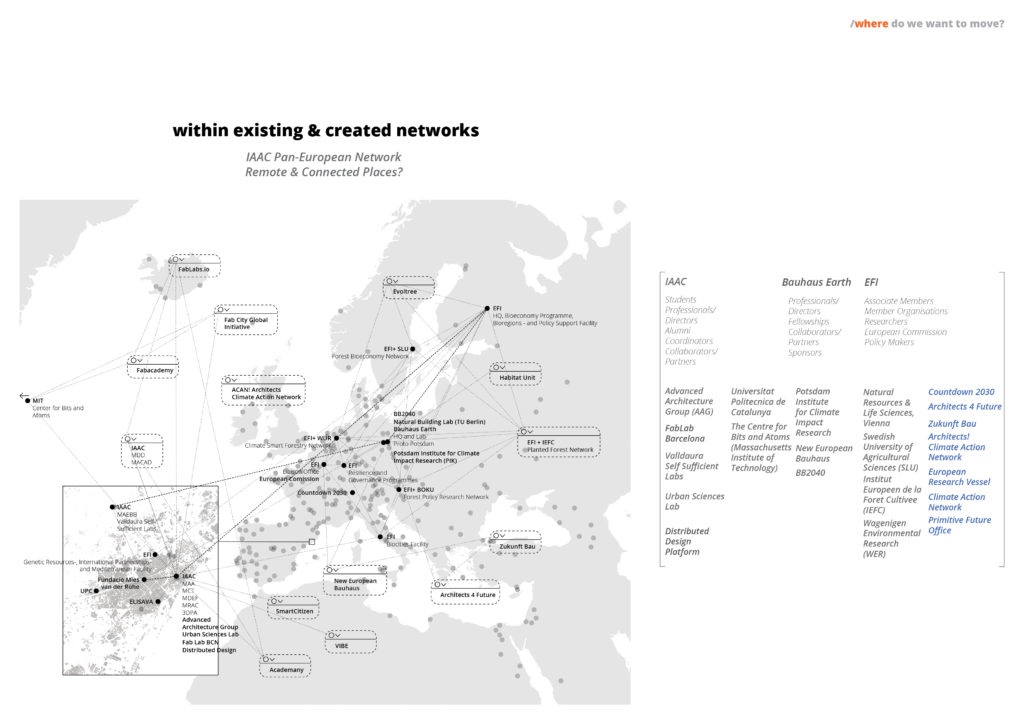
How do we want to move?
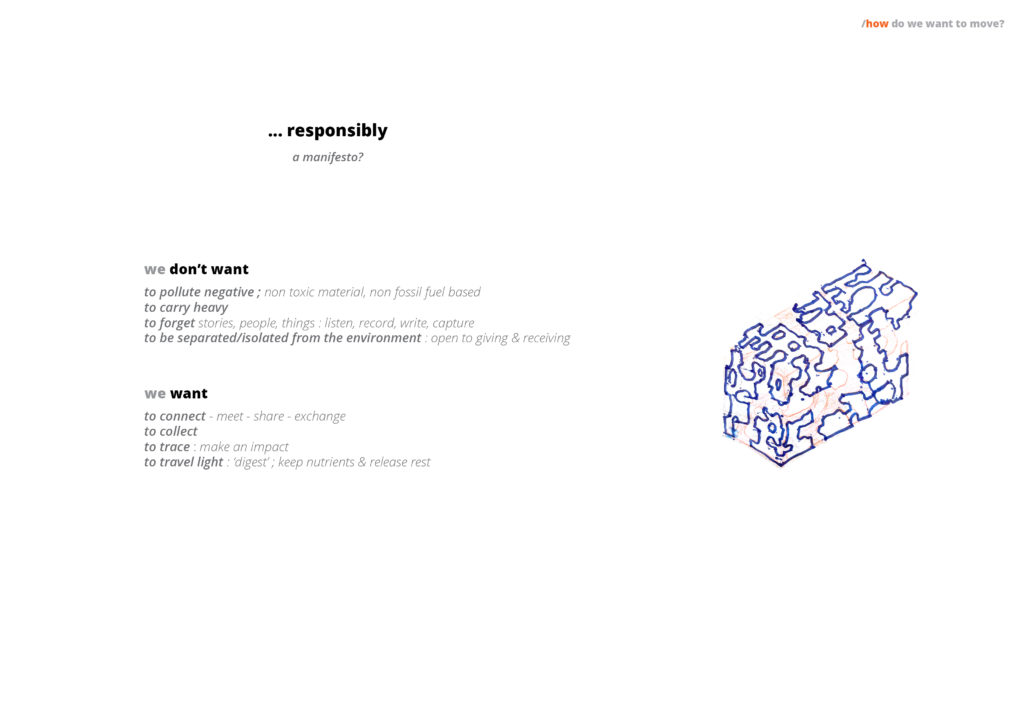
What do we need to move?
The main constraints of the design came with the trailer on which the mobile home is supposed to move. The regulations on Mobile Home for travelling on Spain roads mandate that the dimensions of a mobile home cannot exceed 12 meters in length, 2.6 meters in width and 4 meters in height. The regulations also mandate that the total weight of the building (along with the trailer) cannot exceed 3,500 kg. Thus, these numerical values became a baseline and served as important factors for many design decisions.
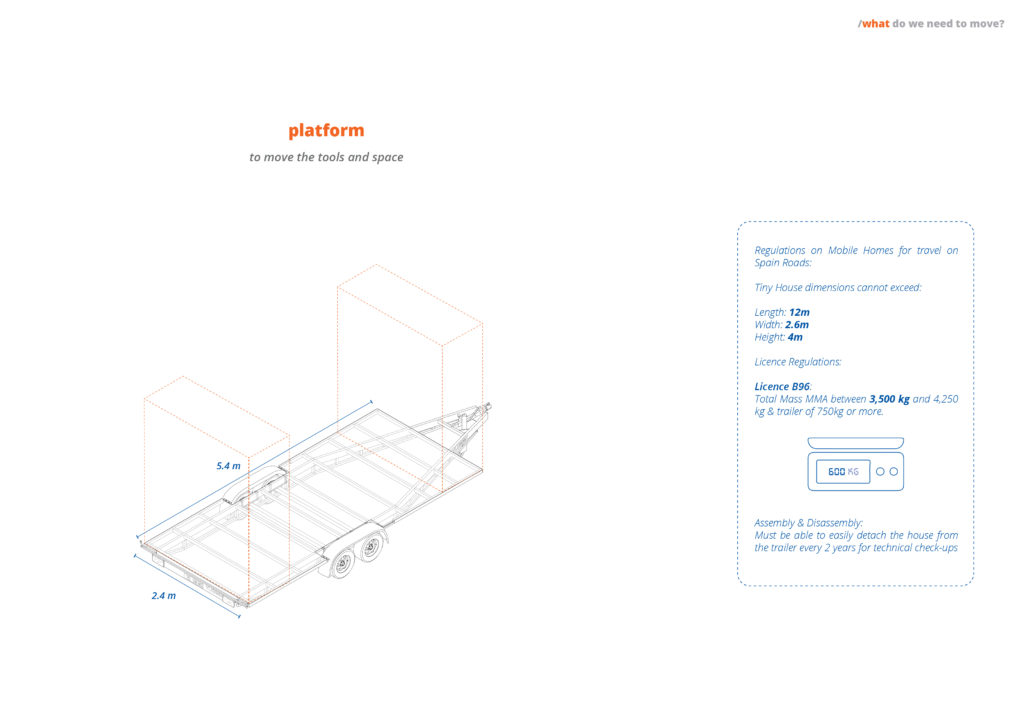
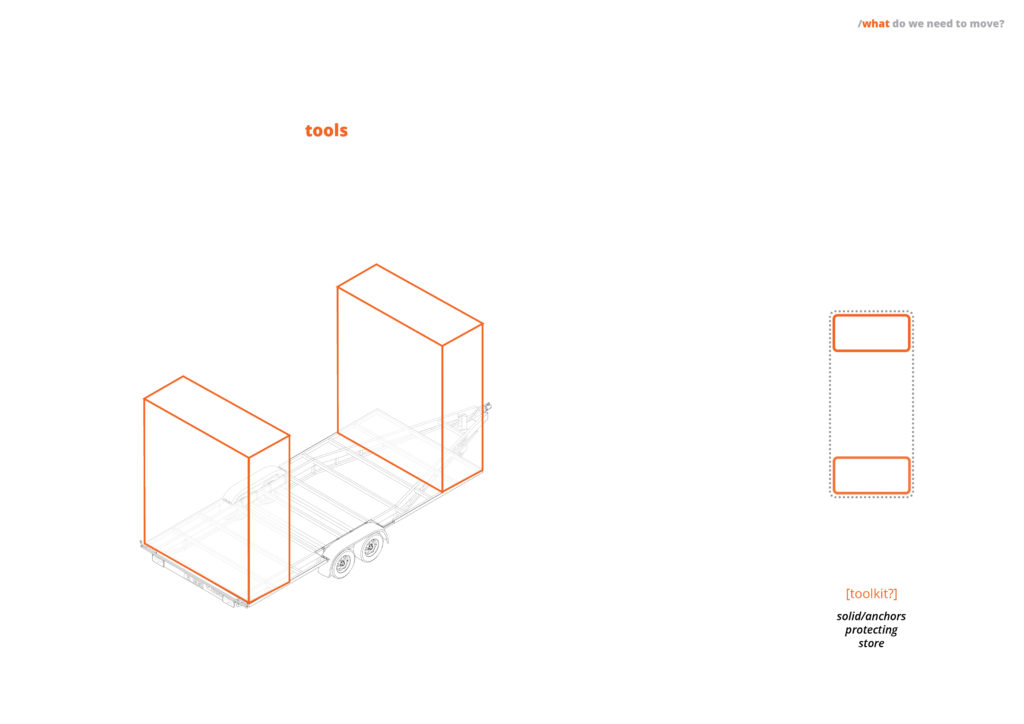
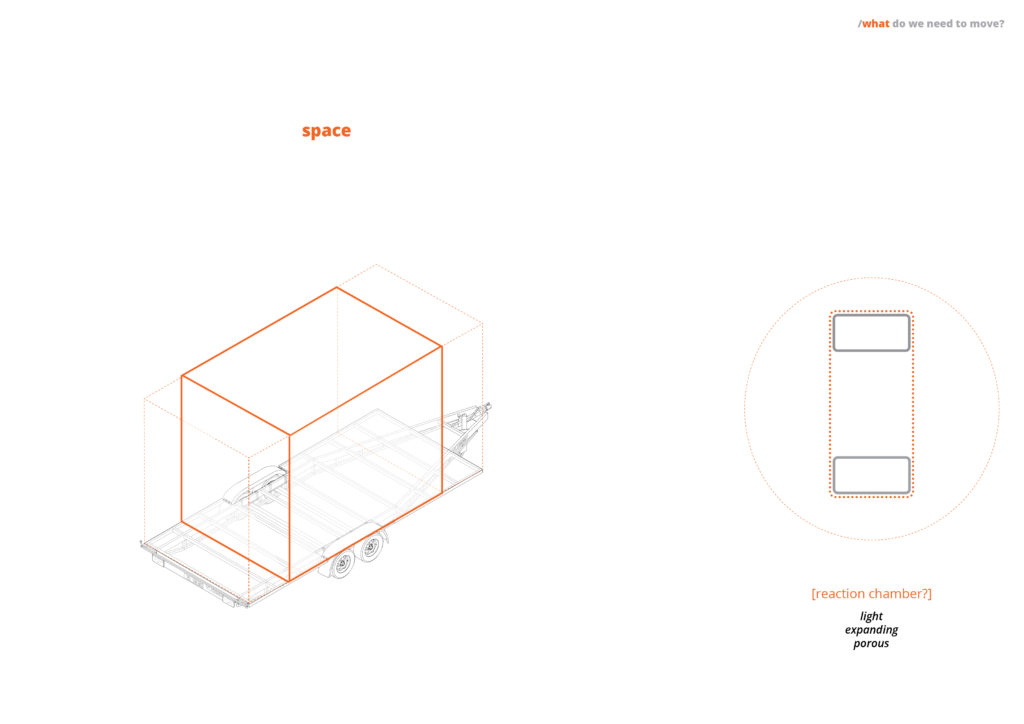
Tools
The design consists of two anchoring, solid toolboxes that contain tools and surfaces designed to initiate different activities in the reaction chamber. The two toolboxes are: Utility Toolbox (A) and Activity Toolbox (B). The Toolbox A or Utility Toolbox is towards the front of the trailer and is the heavier toolbox. It includes all necessary utilities for a home- a kitchen, a shower area, a toilet, and a utility cabinet for electric and water metabolic systems. The Toolbox B or Activity Toolbox contains surfaces and tools that aid in activating the central space. An entrance door is provided on the Toolbox B side. It serves as the main access when the facade is closed or otherwise. The walls of the toolboxes are made with Dowel Laminated Timber (DLT) panels of 4 cm thickness.


Utility Toolbox A


The kitchen includes a sink (40 cm dia.), a burner stove and drawers under the kitchen counter. A fridge is also provided along with spaces to hang utensils. The indicators for the battery level and tank water level are fitted at the kitchen wall.

Two beds (or sleeping shelves) are included on the mezzanine floor to utilize the verticality of the toolboxes. The bed on Utility Toolkit can be extended to the dimensions of 150 cm x 90 cm. It comes with an extendable mattress that creates space for 2 people. A movable ladder accompanies the bed and is attached to the edge of the bed. The ladder can be rotated at an inclination for easier accessibility.
The mobile home gets its energy from the sun and is equipped to sustain by itself for a day. The energy consumption majorly consists of the media-related activities taking place in Mo.Ca and some basic home applications. Taking into consideration the light fabric envelope, a set of 3 light-flexible Monocrystalline solar panels (175 W) was proposed which is connected to a Multiplus invertor (which can also be connected to an external grid) and a battery (150 Ah 24 V). LED light strips are majorly used inside the prototype and the envelope is lit with LED strips as it accentuates the fabric jacket-ing the Catalyst.



The water system includes a Fresh Water tank (126 L), a Recycled Water tank (96 L), a Grey Water tank (32 L) and a Black Water tank (32 L). The water tanks are placed beneath the flooring, connected to the trailer. This made more space available for other utilities in the trailer. The system works on a 12 V battery system that gets charged via solar energy. Three 12 V (10L/min) pumps circulate water within the system. The system is connected to a sink in the kitchen and a shower head in the washroom. The faucet handles allows one to switch between the water from the Fresh Water tank or the Recycled Water tank. Ball float sensors in tanks and a tank water level indicator have also been introduced for efficient maintenance.

The washroom includes a Waterless Humus toilet box and a shower area. The Humus toilet system does not include water for flushing, thus, eliminating any black water produced. This saves the hassle of disposing of or treating black water. The shower water is collected in a catchment and stored in the Grey water tank. It is then filtered and pumped to the Recycled water tank and reused back in the system. The water is treated through a three-stage filter system, followed by a UV filter. An inlet allows water to be pumped from external sources as well. The water from the kitchen sink is stored in the Black Water tank. This water is disposed of to municipal sewer for treatment.

Activity Toolbox (B)

The Toolkit B features a wardrobe that stores the furniture. When outside, the furniture activates the space to host a variety of activities- a space for an office, workshops, exhibitions or concerts. The furniture is designed to fold as to occupy minimal space in this tiny home. The design is a combination of timber, fabric and dowels- which makes for a light setup. The set includes a table, 6 stools, 2 lounge chairs and 6 Fab-kits. A pair of fabric belt straps are used to secure the furniture when the mobile home is on the road.
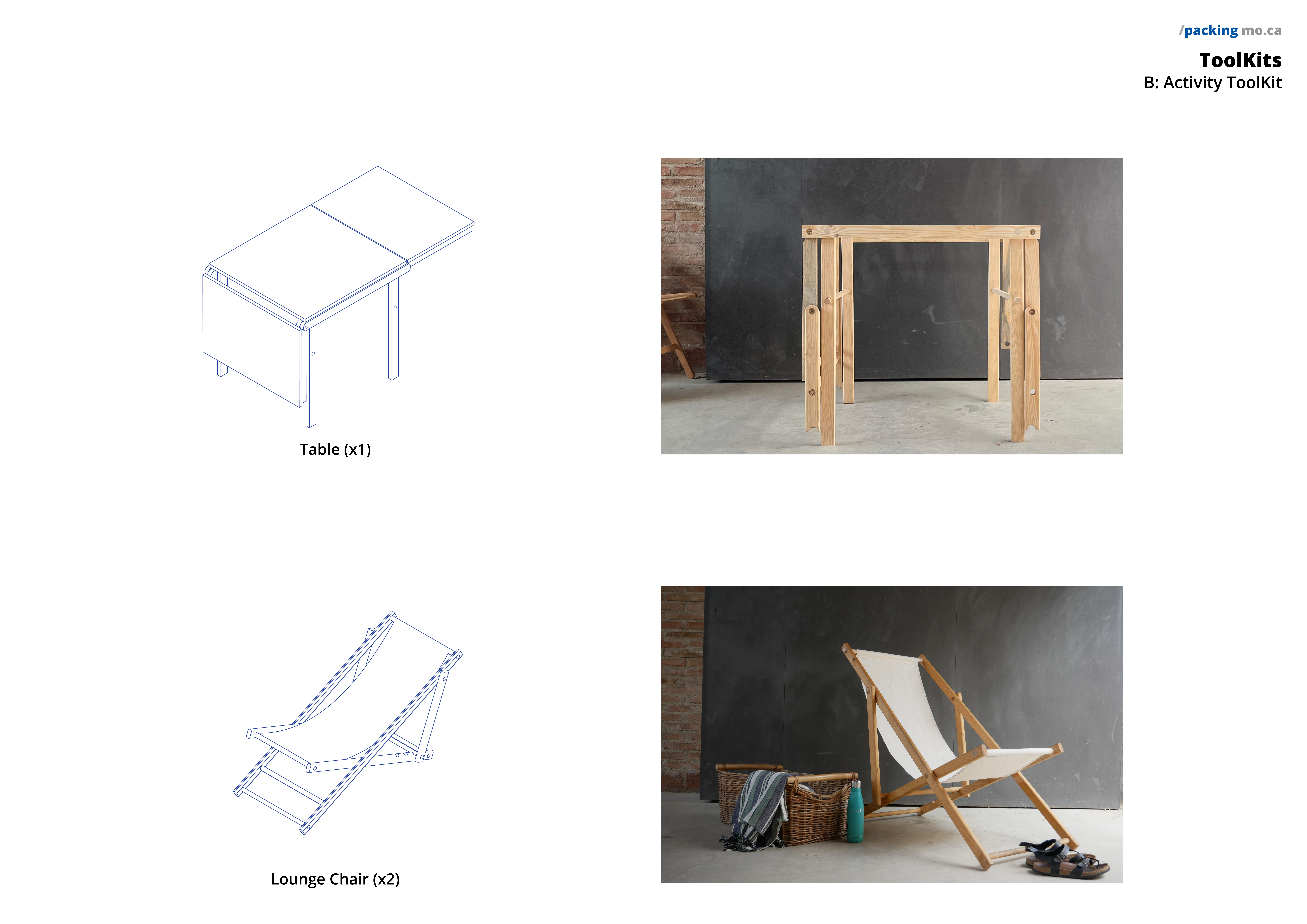
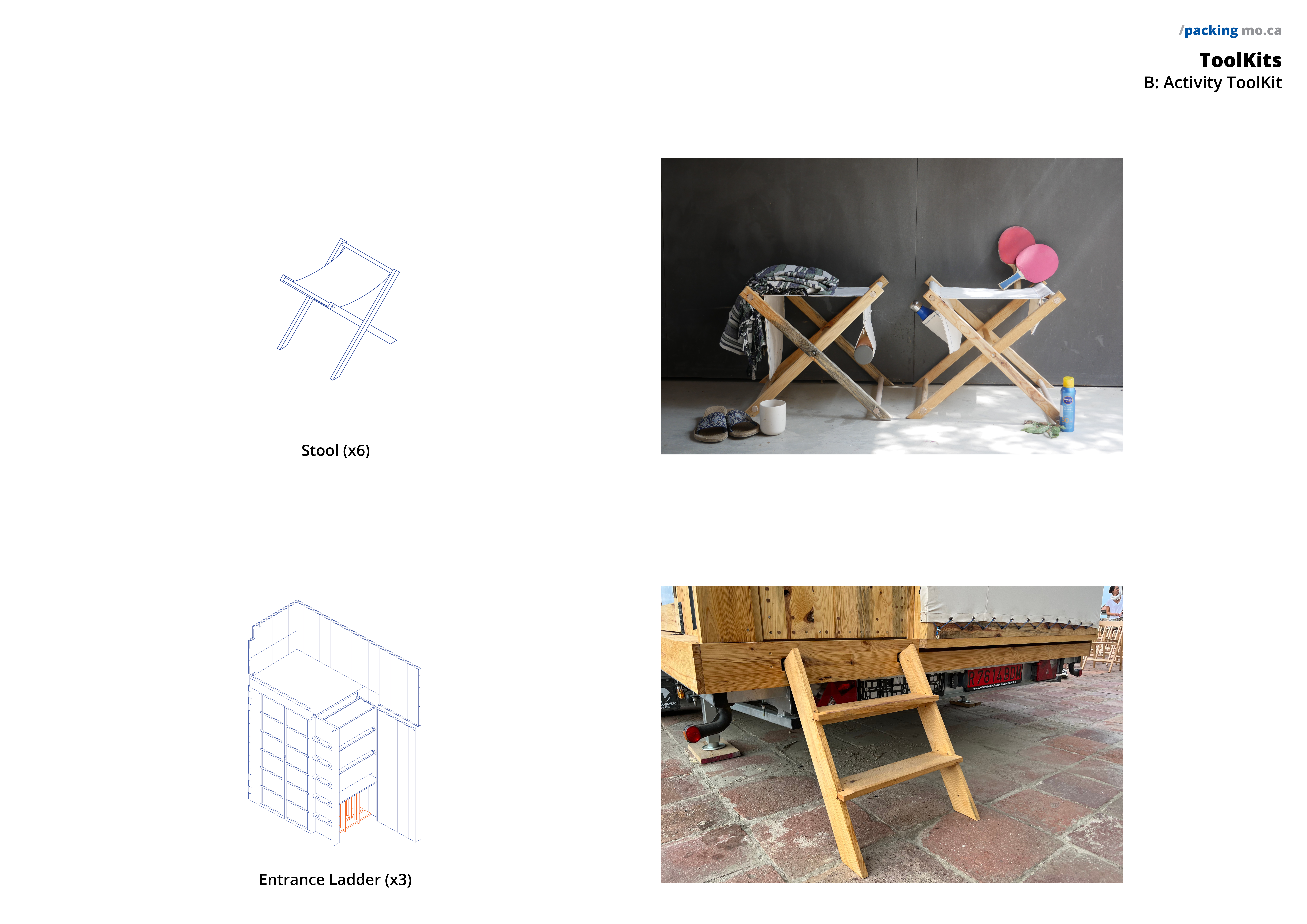
The doors of the wardrobe are made with timber and fabric. These doors are light and follow a similar design style as the rest of the furniture- with the fabric being a key element. Next to the wardrobe, a fixed ladder makes the bed accessible. The Fab-kits are placed behind the ladder and at the entrance door. The Fab-kits include space for a First-Aid kit, a fire extinguisher, books, footwear, laundry and other objects. Underneath this space, 3 entrance ladders can be stored when they are not in use. There are 5 possible locations for the ladders to be hooked onto the fascia board of the flooring.
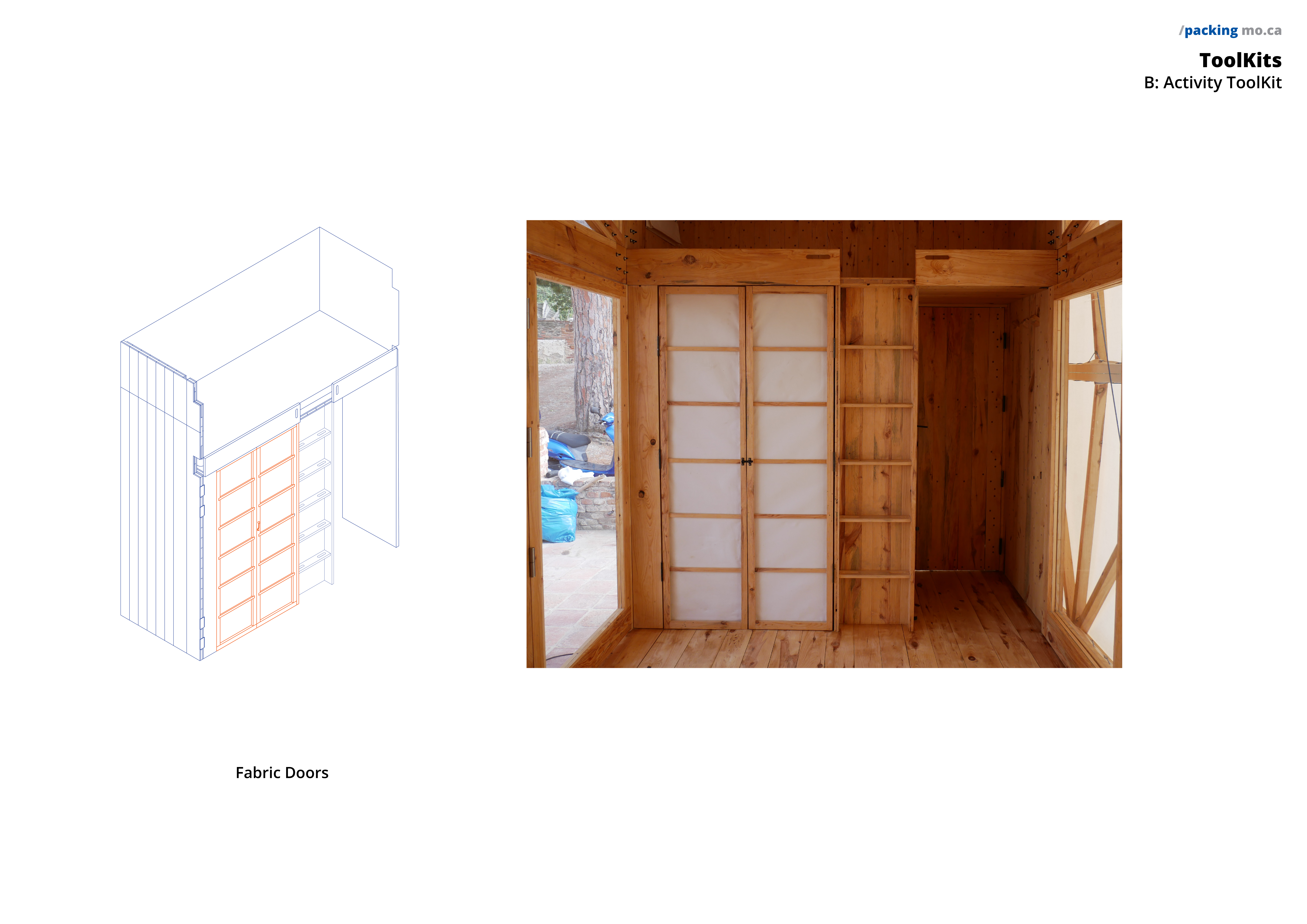

Floor, Roof and Space
For the flooring, timber floor beams and timber planks were picked for a standard flooring system. The floor beams are designed to follow the grid of the trailer and connect with U-clamps to the trailer. A pair of trusses support the roof. The roof consists of roof planks resting on roof beams. There is insulation provided and the PV panels are fixed onto the fabric facade.



Jacket
The facade of the mobile home consists of two layers- a set of glass doors and a fabric facade- that make it possible to adapt the conditions of the central space, depending on the weather conditions, the time of day and the activity happening within.
The glass doors (four on each side) are designed to be either open, semi-open or closed. When closed, the central space is sheltered from the outside environment. When open, the central space becomes part of the outside.
The outer layer is designed as light frameworks covered with a water resistant cotton fabric, tied to the framework with ropes. On the two long sides, the facade slides and folds up vertically with the help of a system of wheels and pulleys.
